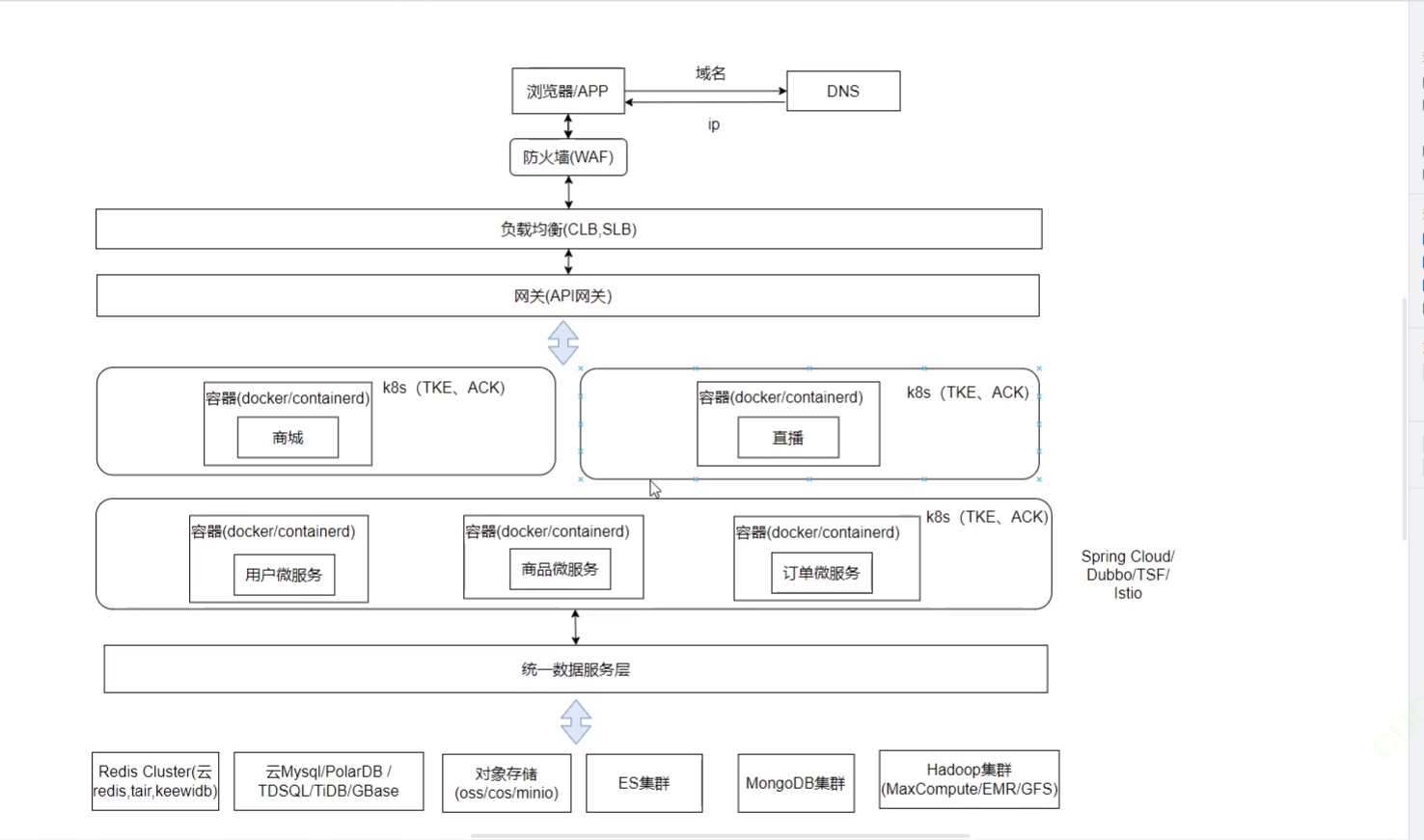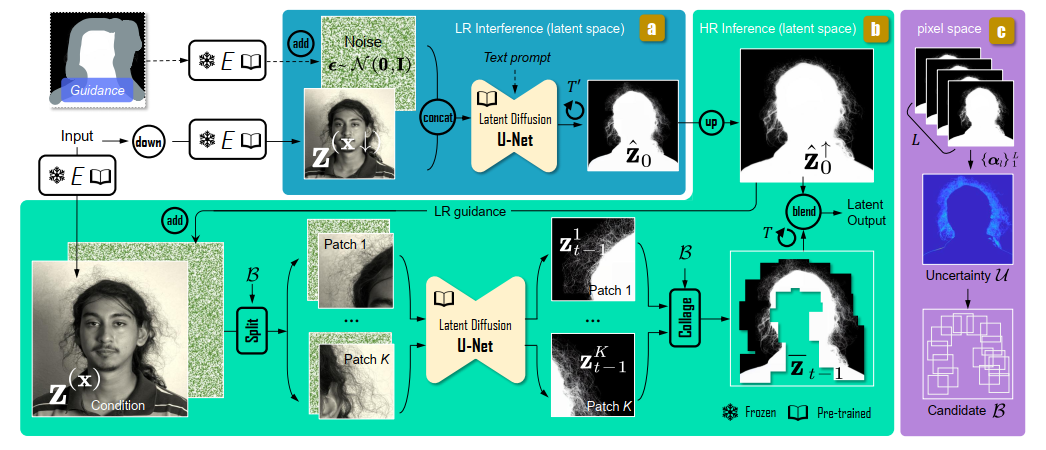【吃透Java手写】3-SpringBoot-简易版-源码解析
【吃透Java手写】SpringBoot-简易版-源码解析
- 1 SpringbootDemo
- 2 准备工作
- 2.1 Springboot-my
- 2.1.1 依赖
- 2.1.2 @SpringBootApplication
- 2.1.3 SJBSpringApplication
- 2.1.3.1 run方法
- 2.2 Springboot-user
- 2.2.1 依赖
- 2.2.2 UserController
- 2.2.3 UserApplication
- 2.3 分析run方法的逻辑
- 2.3.1 创建Spring容器
- 2.3.2 启动Tomcat
- 2.4 启动UserApplication
- 3 功能拓展
- 3.1 创建WebServer
- 3.2 获取对应服务的WebServer
- 3.3 条件注解@SJBConditionalOnClass
- 3.4 自动配置类
- 3.5 发现自动配置类
- 3.5.1 方法一 直接@Import
- 3.5.2 方法二 使用SPI
- 3.5.3 spring.factories源码解析
1 SpringbootDemo
引入依赖
<dependencies><dependency><groupId>org.springframework.boot</groupId><artifactId>spring-boot-starter-web</artifactId><version>2.6.2</version></dependency>
</dependencies>
最简单的SpringbootDemo的只包含启动类

com.zhouyu.MyApplication:
@SpringBootApplication
public class MyApplication {public static void main(String[] args) {SpringApplication.run(MyApplication.class, args);}
}
我们手写自然要模拟MyApplication这个启动类所做的事情以及@SpringBootApplication所做的事情
2 准备工作
两个包:
- springboot模块,表示springboot框架的源码实现
- user包,表示用户业务系统,用来写业务代码来测试我们所模拟出来的SpringBoot
2.1 Springboot-my
2.1.1 依赖
SpringBoot是基于的Spring,所以我们要依赖Spring,然后我希望我们模拟出来的SpringBoot也支持Spring MVC的那一套功能,所以也要依赖Spring MVC,包括Tomcat等,所以在Springboot-my模块中要添加以下依赖:
<dependencies><dependency><groupId>org.springframework</groupId><artifactId>spring-context</artifactId><version>5.3.18</version></dependency><dependency><groupId>org.springframework</groupId><artifactId>spring-web</artifactId><version>5.3.18</version></dependency><dependency><groupId>org.springframework</groupId><artifactId>spring-webmvc</artifactId><version>5.3.18</version></dependency><dependency><groupId>javax.servlet</groupId><artifactId>javax.servlet-api</artifactId><version>4.0.1</version></dependency><dependency><groupId>org.apache.tomcat.embed</groupId><artifactId>tomcat-embed-core</artifactId><version>9.0.60</version></dependency>
</dependencies>
我们在真正使用SpringBoot时,核心会用到SpringBoot一个类和注解:
- @SpringBootApplication,这个注解是加在应用启动类上的,也就是main方法所在的类
- SpringApplication,这个类中有个run()方法,用来启动SpringBoot应用的
所以我们也来模拟实现他们。
2.1.2 @SpringBootApplication
创建org.springboot.SJBSpringBootApplication
@Target(ElementType.TYPE)
@Retention(RetentionPolicy.RUNTIME)
@Configuration
@ComponentScan
public @interface SJBSpringBootApplication {
}
2.1.3 SJBSpringApplication
2.1.3.1 run方法
源码:
public static ConfigurableApplicationContext run(Class<?> primarySource, String... args) {return run(new Class[]{primarySource}, args);
}
String... args:可变参数是为了让通过jar包启动的项目可以指定参数,比如-value=xxx等
我们模拟暂时不考虑这些,只保留最基础的功能
创建org.springboot.SJBSpringApplication
public class SJBSpringApplication {public static void run(Class<?> primarySource, String... args) {}
}
2.2 Springboot-user
我们模拟实现的是SpringBoot,而不是SpringMVC,所以我直接在user包下定义了UserController,最终我希望能运行UserApplication中的main方法,就直接启动了项目,并能在浏览器中正常的访问到UserController中的某个方法。
2.2.1 依赖
引入刚刚的依赖以及Springboot-my的基础依赖
<dependencies><dependency><groupId>org.example</groupId><artifactId>Springboot-my</artifactId><version>1.0-SNAPSHOT</version></dependency>
</dependencies>
2.2.2 UserController
创建com.sjb.user.controller.UserController
@RestController
public class UserController {@GetMapping("/test")public String test() {return "sjb123";}
}
2.2.3 UserApplication
创建com.sjb.user.UserApplication,使用我们刚刚创建的SJBSpringApplication启动类以及SJBSpringBootApplication注解
@SJBSpringBootApplication
public class UserApplication {public static void main(String[] args) {SJBSpringApplication.run(UserApplication.class, args);}
}
2.3 分析run方法的逻辑
首先,我们希望run方法一旦执行完,我们就能在浏览器中访问到UserController,那势必在run方法中要启动Tomcat,通过Tomcat就能接收到请求了。
大家如果学过Spring MVC的底层原理就会知道,在SpringMVC中有一个Servlet非常核心,那就是DispatcherServlet,这个DispatcherServlet需要绑定一个Spring容器,因为DispatcherServlet接收到请求后,就会从所绑定的Spring容器中找到所匹配的Controller,并执行所匹配的方法。
所以,在run方法中,我们要实现的逻辑如下:
- 创建一个Spring容器
- 创建Tomcat对象
- 生成DispatcherServlet对象,并且和前面创建出来的Spring容器进行绑定
- 将DispatcherServlet添加到Tomcat中
- 启动Tomcat
2.3.1 创建Spring容器
public static void run(Class<?> configClazz) {AnnotationConfigWebApplicationContext applicationContext = new AnnotationConfigWebApplicationContext();applicationContext.register(configClazz);applicationContext.refresh();
}
我们创建的是一个AnnotationConfigWebApplicationContext容器,并且把run方法传入进来的class作为容器的配置类,比如在UserApplication的run方法中,我们就是把2.2.3中的UserApplication.class传入到了run方法中,最终UserApplication就是所创建出来的Spring容器的配置类,并且由于UserApplication类上有@SJBSpringBootApplication注解,而@SJBSpringBootApplication注解的定义上又存在@ComponentScan注解,所以AnnotationConfigWebApplicationContext容器在执行refresh时,就会解析UserApplication这个配置类,从而发现定义了@ComponentScan注解,也就知道了要进行扫描,只不过扫描路径为空,而AnnotationConfigWebApplicationContext容器会处理这种情况,如果扫描路径会空,则会将UserApplication所在的包路径做为扫描路径,从而就会扫描到UserController。
RestController:
@Target({ElementType.TYPE})
@Retention(RetentionPolicy.RUNTIME)
@Documented
@Controller
@ResponseBody
public @interface RestController {@AliasFor(annotation = Controller.class)String value() default "";
}
Controller
@Target({ElementType.TYPE})
@Retention(RetentionPolicy.RUNTIME)
@Documented
@Component
public @interface Controller {@AliasFor(annotation = Component.class)String value() default "";
}
所以Spring容器创建完之后,容器内部就拥有了UserController这个Bean。
2.3.2 启动Tomcat
我们用的是Embed-Tomcat,也就是内嵌的Tomcat,真正的SpringBoot中也用的是内嵌的Tomcat,而对于启动内嵌的Tomcat,也并不麻烦
在org.springboot.SJBSpringApplication#run中新建startTomcat方法
public static void startTomcat(WebApplicationContext applicationContext){Tomcat tomcat = new Tomcat();Server server = tomcat.getServer();Service service = server.findService("Tomcat");Connector connector = new Connector();connector.setPort(8081);Engine engine = new StandardEngine();engine.setDefaultHost("localhost");Host host = new StandardHost();host.setName("localhost");String contextPath = "";Context context = new StandardContext();context.setPath(contextPath);context.addLifecycleListener(new Tomcat.FixContextListener());host.addChild(context);engine.addChild(host);service.setContainer(engine);service.addConnector(connector);tomcat.addServlet(contextPath, "dispatcher", new DispatcherServlet(applicationContext));context.addServletMappingDecoded("/*", "dispatcher");try {tomcat.start();} catch (LifecycleException e) {e.printStackTrace();}
}
代码虽然看上去比较多,但是逻辑并不复杂,比如配置了Tomcat绑定的端口为8081,后面向当前Tomcat中添加了DispatcherServlet,并设置了一个Mapping关系,最后启动,其他代码则不用太过关心。
而且在构造DispatcherServlet对象时,传入了一个ApplicationContext对象,也就是一个Spring容器,就是我们前文说的,DispatcherServlet对象和一个Spring容器进行绑定。
接下来,我们只需要在run方法中,调用startTomcat即可:
public static void run(Class<?> configClazz) {AnnotationConfigWebApplicationContext applicationContext = new AnnotationConfigWebApplicationContext();applicationContext.register(configClazz);applicationContext.refresh();startTomcat(applicationContext);
}
2.4 启动UserApplication
输出
5月 06, 2024 1:40:03 下午 org.apache.coyote.AbstractProtocol init
信息: Initializing ProtocolHandler ["http-nio-8081"]
5月 06, 2024 1:40:03 下午 org.apache.catalina.core.StandardService startInternal
信息: Starting service [Tomcat]
5月 06, 2024 1:40:03 下午 org.apache.catalina.core.StandardEngine startInternal
信息: Starting Servlet engine: [Apache Tomcat/9.0.60]
5月 06, 2024 1:40:03 下午 org.apache.catalina.util.SessionIdGeneratorBase createSecureRandom
警告: Creation of SecureRandom instance for session ID generation using [SHA1PRNG] took [111] milliseconds.
5月 06, 2024 1:40:03 下午 org.apache.coyote.AbstractProtocol start
信息: Starting ProtocolHandler ["http-nio-8081"]
显示启动成功,访问http://localhost:8081/test

成功访问到并输出
3 功能拓展
虽然我们前面已经实现了一个比较简单的SpringBoot,不过我们可以继续来扩充它的功能,比如现在我有这么一个需求,这个需求就是我现在不想使用Tomcat了,而是想要用Jetty,那该怎么办?
我们前面代码中默认启动的是Tomcat,那我现在想改成这样子:
- 如果项目中有Tomcat的依赖,那就启动Tomcat
- 如果项目中有Jetty的依赖就启动Jetty
- 如果两者都没有则报错
- 如果两者都有也报错
这个逻辑希望SpringBoot自动帮我实现,对于程序员用户而言,只要在Pom文件中添加相关依赖就可以了,想用Tomcat就加Tomcat依赖,想用Jetty就加Jetty依赖。
那SpringBoot该如何实现呢?
3.1 创建WebServer
我们知道,不管是Tomcat还是Jetty,它们都是应用服务器,或者是Servlet容器,所以我们可以定义接口来表示它们,这个接口叫做WebServer(别问我为什么叫这个,因为真正的SpringBoot源码中也叫这个)。
创建org.springboot.WebServer,并且在这个接口中定义一个start方法:
public interface WebServer { public void start();
}
有了WebServer接口之后,就针对Tomcat和Jetty提供两个实现类:
创建org.springboot.TomcatWebServer实现类和org.springboot.JettyWebServer实现类
public class TomcatWebServer implements WebServer{@Overridepublic void start() {System.out.println("TomcatWebServer start...");}
}
public class JettyWebServer implements WebServer{@Overridepublic void start() {System.out.println("JettyWebServer start...");}
}
并且在Springboot-my模块中添加Jetty的依赖
<dependency><groupId>org.eclipse.jetty</groupId><artifactId>jetty-server</artifactId><version>9.4.43.v20210629</version>
</dependency>
3.2 获取对应服务的WebServer
而在SJBSpringApplication中的run方法中,我们就要去获取对应的WebServer,然后启动对应的webServer,代码为:
public static void run(Class clazz){AnnotationConfigWebApplicationContext applicationContext = new AnnotationConfigWebApplicationContext();applicationContext.register(clazz);applicationContext.refresh();WebServer webServer = getWebServer(applicationContext);webServer.start();
}public static WebServer getWebServer(AnnotationConfigWebApplicationContext applicationContext){return null;
}
这样,我们就只需要在getWebServer方法中去判断到底该返回TomcatWebServer还是JettyWebServer。
前面提到过,我们希望根据项目中的依赖情况,来决定到底用哪个WebServer,所以直接用SpringBoot中的源码实现方式来模拟了。
3.3 条件注解@SJBConditionalOnClass
创建org.springboot.SJBConditionalOnClass注解
@Target({ ElementType.TYPE, ElementType.METHOD })
@Retention(RetentionPolicy.RUNTIME)
@Conditional(SJBOnClassCondition.class)
public @interface SJBConditionalOnClass {String value() default "";
}
-
@Conditional注解是从spring4.0才有的,可以用在任何类型或者方法上面,通过@Conditional注解可以配置一些条件判断,当所有条件都满足的时候,被@Conditional标注的目标才会被spring容器处理。
-
Condition接口:用来表示条件判断的接口,源码如下:
@FunctionalInterface public interface Condition {/*** 判断条件是否匹配* context:条件判断上下文*/boolean matches(ConditionContext context, AnnotatedTypeMetadata metadata);} -
@Conditional使用的3步骤:
-
自定义一个类,实现Condition或ConfigurationCondition接口,实现matches方法
-
在目标对象上使用@Conditional注解,并指定value的指为自定义的Condition类型
-
启动spring容器加载资源,此时@Conditional就会起作用了
-
注意核心为@Conditional(SJBOnClassCondition.class)中的SJBOnClassCondition,因为它才是真正得条件逻辑:
public class SJBOnClassCondition implements Condition {@Overridepublic boolean matches(ConditionContext context, AnnotatedTypeMetadata metadata) {Map<String, Object> annotationAttributes =metadata.getAnnotationAttributes(SJBConditionalOnClass.class.getName());String className = (String) annotationAttributes.get("value");try {context.getClassLoader().loadClass(className);return true;} catch (ClassNotFoundException e) {return false;}}
}
具体逻辑为,拿到@SJBConditionalOnClass中的value属性,然后用类加载器进行加载,如果加载到了所指定的这个类,那就表示符合条件,如果加载不到,则表示不符合条件。
并且进行可选依赖配置
将Spring-my中的依赖修改
<dependency><groupId>org.eclipse.jetty</groupId><artifactId>jetty-server</artifactId><version>9.4.43.v20210629</version><optional>true</optional>
</dependency>
添加<optional>true</optional>这样只是Spring-user只依赖tomcat,如果要依赖jetty
则修改为
<dependency><groupId>org.springframework</groupId><artifactId>spring-webmvc</artifactId><version>5.3.18</version><exclusions><exclusion><groupId>org.apache.tomcat.embed</groupId><artifactId>tomcat-embed-core</artifactId></exclusion></exclusions>
</dependency><!-- <dependency><groupId>org.apache.tomcat.embed</groupId><artifactId>tomcat-embed-core</artifactId><version>9.0.60</version>
</dependency>-->
<dependency><groupId>org.eclipse.jetty</groupId><artifactId>jetty-server</artifactId><version>9.4.43.v20210629</version>
</dependency>
3.4 自动配置类
UserApplication的@SJBSpringBootApplication只会扫描com.sjb.user下的包,自动配置类并没有作为Bean放入容器内
有了条件注解,我们就可以来使用它了,那如何实现呢?这里就要用到自动配置类的概念
创建org.springboot.WebServiceAutoConfiguration
@Configuration
public class WebServiceAutoConfiguration {@Bean@SJBConditionalOnClass("org.apache.catalina.startup.Tomcat")public TomcatWebServer tomcatWebServer(){return new TomcatWebServer();}@Bean@SJBConditionalOnClass("org.eclipse.jetty.server.Server")public JettyWebServer jettyWebServer(){return new JettyWebServer();}
}
这个代码还是比较简单的,通过一个WebServiceAutoConfiguration的Spring配置类,在里面定义了两个Bean,一个TomcatWebServer,一个JettyWebServer,不过这两个要生效的前提是符合当前所指定的条件,比如:
- 只有存在"org.apache.catalina.startup.Tomcat"类,那么才有TomcatWebServer这个Bean
- 只有存在"org.eclipse.jetty.server.Server"类,那么才有TomcatWebServer这个Bean
并且我们只需要在SJBSpringApplication中getWebServer方法,如此实现:
public static WebServer getWebServer(ApplicationContext applicationContext){// key为beanName, value为Bean对象Map<String, WebServer> webServers = applicationContext.getBeansOfType(WebServer.class);if (webServers.isEmpty()) {throw new NullPointerException();}if (webServers.size() > 1) {throw new IllegalStateException();}// 返回唯一的一个return webServers.values().stream().findFirst().get();
}
这样整体SpringBoot启动逻辑就是这样的:
- 创建一个AnnotationConfigWebApplicationContext容器
- 解析UserApplication类,然后进行扫描
- 通过getWebServer方法从Spring容器中获取WebServer类型的Bean
- 调用WebServer对象的start方法
有了以上步骤,我们还差了一个关键步骤,就是Spring要能解析到WebServiceAutoConfiguration这个自动配置类,因为不管这个类里写了什么代码,Spring不去解析它,那都是没用的,此时我们需要SpringBoot在run方法中,能找到WebServiceAutoConfiguration这个配置类并添加到Spring容器中。
UserApplication是Spring的一个配置类,但是UserApplication是我们传递给SpringBoot,从而添加到Spring容器中去的,而WebServiceAutoConfiguration就需要SpringBoot去自动发现,而不需要程序员做任何配置才能把它添加到Spring容器中去,而且要注意的是,Spring容器扫描也是扫描不到WebServiceAutoConfiguration这个类的,因为我们的扫描路径是"com.sjb.user",而WebServiceAutoConfiguration所在的包路径为"org.springboot"。
3.5 发现自动配置类
3.5.1 方法一 直接@Import
直接在org.springboot.SJBSpringBootApplication注解上加上完成自动装配
@Import(WebServiceAutoConfiguration.class)
3.5.2 方法二 使用SPI
SpringBoot中自己实现了一套SPI机制,也就是我们熟知的spring.factories文件,那么我们模拟就不搞复杂了,就直接用JDK自带的SPI机制。
因为针对后面所有的自动配置类,一个一个导入不现实,所以就需要使用SPI。
然后需要在resources目录下新建META-INF/services目录,并且在这个目录下新建一个与上述接口的全限定名一致的文件org.springboot.AutoConfiguration,在这个文件中写入接口的实现类的全限定名:
org.springboot.WebServiceAutoConfiguration

SPI的配置就完成了,相当于通过org.springboot.AutoConfiguration文件配置了springboot中所提供的配置类。
并且提供一个接口:
public interface AutoConfiguration {
}
并且WebServiceAutoConfiguration实现该接口:
@Configuration
public class WebServiceAutoConfiguration implements AutoConfiguration{@Bean@SJBConditionalOnClass("org.apache.catalina.startup.Tomcat")public TomcatWebServer tomcatWebServer(){return new TomcatWebServer();}@Bean@SJBConditionalOnClass("org.eclipse.jetty.server.Server")public JettyWebServer jettyWebServer(){return new JettyWebServer();}
}
然后我们再利用spring中的@Import技术来导入这些配置类,我们在@SJBSpringBootApplication的定义上增加如下代码:
@Target(ElementType.TYPE)
@Retention(RetentionPolicy.RUNTIME)
@Configuration
@ComponentScan
@Import(SJBImportSelect.class)
public @interface SJBSpringBootApplication {
}
引入的SJBImportSelect如下,通过serviceLoader加载实现类并调用:
public class SJBImportSelect implements DeferredImportSelector {@Overridepublic String[] selectImports(AnnotationMetadata importingClassMetadata) {ServiceLoader<AutoConfiguration> serviceLoader = ServiceLoader.load(AutoConfiguration.class);List<String> list = new ArrayList<>();for (AutoConfiguration autoConfiguration : serviceLoader) {list.add(autoConfiguration.getClass().getName());}return list.toArray(new String[0]);}
}
ServiceLoader这个类的源码如下:
public final class ServiceLoader<S> implements Iterable<S> {//扫描目录前缀private static final String PREFIX = "META-INF/services/";// 被加载的类或接口private final Class<S> service;// 用于定位、加载和实例化实现方实现的类的类加载器private final ClassLoader loader;// 上下文对象private final AccessControlContext acc;// 按照实例化的顺序缓存已经实例化的类private LinkedHashMap<String, S> providers = new LinkedHashMap<>();// 懒查找迭代器private java.util.ServiceLoader.LazyIterator lookupIterator;// 私有内部类,提供对所有的service的类的加载与实例化private class LazyIterator implements Iterator<S> {Class<S> service;ClassLoader loader;Enumeration<URL> configs = null;String nextName = null;//...private boolean hasNextService() {if (configs == null) {try {//获取目录下所有的类String fullName = PREFIX + service.getName();if (loader == null)configs = ClassLoader.getSystemResources(fullName);elseconfigs = loader.getResources(fullName);} catch (IOException x) {//...}//....}}private S nextService() {String cn = nextName;nextName = null;Class<?> c = null;try {//反射加载类c = Class.forName(cn, false, loader);} catch (ClassNotFoundException x) {}try {//实例化S p = service.cast(c.newInstance());//放进缓存providers.put(cn, p);return p;} catch (Throwable x) {//..}//..}}
}

这就完成了从org.springboot.AutoConfiguration文件中获取自动配置类的名字,并导入到Spring容器中,从而Spring容器就知道了这些配置类的存在,而对于user项目而言,是不需要修改代码的。
3.5.3 spring.factories源码解析
@ComponentScan 注解只能扫描 Spring Boot 项目包内的 bean 并注册到 Spring 容器中,项目依赖包中的 bean 不会被扫描和注册。此时,我们需要使用 @EnableAutoConfiguration 注解来注册项目依赖包中的 bean。而 spring.factories 文件,可用来记录项目包外需要注册的 bean 类名。

EnableAutoConfiguration注解:
@Target({ElementType.TYPE})
@Retention(RetentionPolicy.RUNTIME)
@Documented
@Inherited
@AutoConfigurationPackage
@Import({AutoConfigurationImportSelector.class})
public @interface EnableAutoConfiguration {String ENABLED_OVERRIDE_PROPERTY = "spring.boot.enableautoconfiguration";Class<?>[] exclude() default {};String[] excludeName() default {};
}
导入的类AutoConfigurationImportSelector.class:
根据接口获取其接口类的名称,这个方法返回的是类名的列表,获取所有的依赖包组成Map
public static List<String> loadFactoryNames(Class<?> factoryType, @Nullable ClassLoader classLoader) {ClassLoader classLoaderToUse = classLoader;if (classLoader == null) {classLoaderToUse = SpringFactoriesLoader.class.getClassLoader();}String factoryTypeName = factoryType.getName();return (List)loadSpringFactories(classLoaderToUse).getOrDefault(factoryTypeName, Collections.emptyList());
}
在org.springframework.core.io.support.SpringFactoriesLoader#loadSpringFactories中
然后从Map集合中找到Value,找他的META-INF/spring.factories,
private static Map<String, List<String>> loadSpringFactories(ClassLoader classLoader) {Map<String, List<String>> result = (Map)cache.get(classLoader);if (result != null) {return result;} else {Map<String, List<String>> result = new HashMap();try {Enumeration<URL> urls = classLoader.getResources("META-INF/spring.factories");while(urls.hasMoreElements()) {URL url = (URL)urls.nextElement();UrlResource resource = new UrlResource(url);
spring.factories的是通过Properties解析得到的,所以我们在写文件中的内容都是安装下面这种方式配置的:
com.xxx.interface=com.xxx.classname
当在Maven中引入依赖时,Maven会负责下载并管理这些依赖包,但并不涉及具体的配置和集成。而当你在项目中需要使用Spring框架来管理组件、配置和依赖时,你可能需要在META-INF/spring.factories文件中注册一些类或者配置,以便Spring框架在应用启动时自动扫描并按照这些配置进行初始化。
所以,Maven用于管理依赖,而META-INF/spring.factories用于Spring框架的自动化配置和集成,它们可以配合使用来构建一个完整的项目。
需不需要META-INF这取决于依赖包本身的设计和功能。有些依赖包可能已经完全集成了Spring框架,并且在其内部已经做好了相应的自动化配置,因此你只需引入依赖即可直接在Spring项目中使用,而不需要手动添加额外的配置。
另一方面,有些依赖包可能提供了一些Spring框架的扩展或者功能,但并没有直接与Spring框架进行深度集成。在这种情况下,你可能需要在项目中手动配置一些内容,例如在META-INF/spring.factories文件中添加一些配置,以便Spring框架能够识别和使用这些扩展或功能。
因此,需要在META-INF中添加配置的情况取决于依赖包本身的特性以及与Spring框架的集成程度。
相关文章:

【吃透Java手写】3-SpringBoot-简易版-源码解析
【吃透Java手写】SpringBoot-简易版-源码解析 1 SpringbootDemo2 准备工作2.1 Springboot-my2.1.1 依赖2.1.2 SpringBootApplication2.1.3 SJBSpringApplication2.1.3.1 run方法 2.2 Springboot-user2.2.1 依赖2.2.2 UserController2.2.3 UserApplication 2.3 分析run方法的逻辑…...

maven mirrorOf的作用
在工作中遇到了一个问题导致依赖下载不了,最后发现是mirror的问题,决定好好去看一下mirror的配置,以及mirrorOf的作用,以前都是直接复制过来使用,看了之后才明白什么意思。 过程 如果你设置了镜像,镜像会匹…...

Centos7 安装 MySQL5.7 使用 RPM 方式
1 访问网站 https://downloads.mysql.com/archives/community/ 选择合适的版本,点击 Download。 2 上传下载好的 mysql-5.7.44-1.el7.x86_64.rpm-bundle.tar 文件到 Centos7 机器,这里放到了 下载 目录。 3 解压 mysql-5.7.44-1.el7.x86_64.rpm-bundle.…...

代码随想录算法训练营day21 | 513.找树左下角的值、112. 路径总和、106.从中序与后序遍历序列构造二叉树
513.找树左下角的值 迭代法比较简单,层序遍历,找到最下面一层的第一个节点。题目已经说明节点数>1了 class Solution:def findBottomLeftValue(self, root: Optional[TreeNode]) -> int:queue collections.deque()queue.append(root)result ro…...

微信小程序知识点归纳(一)
前言:适用于有一定基础的前端开发同学,完成从网页开发到小程序开发的知识转换。 先立框架,后砌墙壁 回顾:了解微信小程序开发流程-CSDN博客 初始页面结构,三部分pages、utils、配置,分别存放页面、工具类…...

wangEditor富文本编辑器与layui图片上传
记录:js 显示默认的wangEditor富文本编辑器内容和图片 <style>body {background-color: #ffffff;}.layui-form-select dl{z-index:100000;} </style> <div class"layui-form layuimini-form"><div class"layui-form-item"…...

爬虫学习:XPath提取网页数据
目录 一、安装XPath 二、XPath的基础语法 1.选取节点 三、使用XPath匹配数据 1.浏览器审查元素 2.具体实例 四、总结 一、安装XPath 控制台输入指令:pip install lxml 二、XPath的基础语法 XPath是一种在XML文档中查找信息的语言,可以使用它在HTM…...

【雅思写作】Vince9120雅思小作文笔记——P1 Intro(前言)
文章目录 链接P1 Intro(前言)字数限制题型综述(problem types overview)1. **柱状图(Bar Chart)** - 描述不同类别在某个或多个变量上的数据量比较。2. **线图(Line Graph)** - 展示…...

【面试干货】HTTPS 工作原理
【面试干货】HTTPS 工作原理 1、握手阶段(Handshake)2、密钥协商阶段3、加密通信阶段4、结束通信阶段 💖The Begin💖点点关注,收藏不迷路💖 HTTPS(HyperText Transfer Protocol Secureÿ…...
)
Cocos Creator 中编码规范 (6)
Cocos中命名规范 创建文件夹,全小写。创建脚本,首字母大写的驼峰形式。创建变量,首字母小写的驼峰形式 官方的编码规范...

Vue3:menu导航栏出现多个同一跳转路径的菜单处理
文章目录 需求整理实现思路实现过程 需求整理,实现思路 最近公司想将之前老的项目整理出来,因为这个老项目内容太杂什么页面都往里面塞,导致菜单特别多,公司就像将这个老的项目迁出来,这个旧的项目本来是后端PHP写的。…...

SAM轻量化应用Auto-SAM、Group-Mix SAM、RAP-SAM、STLM
1. Auto SAM(Auto-Prompting SAM for Mobile Friendly 3D Medical Image Segmentation) 1.1 面临问题 医学背景: (1)与自然图像相比,医学图像的尺寸更小,形状不规则,对比度更低。&…...

深度优化搜索DFS使用详解,看这篇就够了!!!
深度优先搜索(Depth-First Search,DFS)是一种用于遍历或搜索树和图的算法。在最坏的情况下,深度优先搜索的性能为O(VE),其中V是顶点数,E是边数。DFS常用于解决连通性问题、路径问题、生成树问题等。 ### D…...

Apache SeaTunnel 正式发布2.3.5版本,功能增强及多个Bug修复
经过两个月的筹备,我们在2.3.4版本基础上进行了新一轮的迭代,本次更新不仅修复了多个关键问题,还引入了若干重要功能增强和性能优化。 在此,我们先提前感谢社区成员的贡献和支持,如果你想升级最新的版本,快…...

interview_bak
flink内存管理 JVM 存在的几个问题: Java 对象存储密度低。一个只包含 boolean 属性的对象占用了16个字节内存:对象头占了8个,boolean 属性占了1个,对齐填充占了7个。而实际上只需要一个bit(1/8字节)就够了。Full GC 会极大地影响性能,尤其是为了处理更大数据而开了很大…...

layui 数据表格 自动定位新增行位置
由于数据表格新增行后没有到新增到当前位置 继续增加的需求: 因为自己是新增行后到最后一行的 所以 就定位到最后一行 并且 高亮 高亮颜色浅 可自行更改 整理了一下 可根据 情况 修改 // 初始化滚动条位置变量 let tableScroll {scrollTob: 0,scrollLeft: 0,…...

window10下安装ubuntu系统以及docker使用
window10下安装ubuntu系统以及docker使用 1. 启用适用于Linux的Windwos子系统2.下载Linux内核更新包3.将 WSL 2 设置为默认版本4.安装Ubuntu<br />直接去Microsoft store里面直接搜索Ubuntu进行安装。5.可能出现的问题1.win10启动ubuntu报错 参考的对象类型不支持尝试的操…...

Netty核心组件介绍
Netty是一款用于创建高性能网络应用程序的高级框架。Netty的核心组件如下: Channel回调Future事件和ChannelHander Channel channel是Java NIO的一个基本构造。可以把Channel看作是传入或传出数据的载体。它可以被打开或关闭,连接或断开连接。 回调 …...

代码审计平台sonarqube的安装及使用
docker搭建代码审计平台sonarqube 一、代码审计关注的质量指标二、静态分析技术分类三、使用sonarqube的目的四、sonarqube流程五、docker快速搭建sonarqube六、sonarqube scanner的安装和使用七、sonarqube对maven项目进行分析八、sonarqube分析报告解析九、代码扫描规则定制十…...

C++ 使用nlohmann/json.hpp库读写json字符串
1. json库 我个人比较喜欢 nlohmann/json.hpp 这个库,因为它只需要一个hpp文件即可,足够轻量! 这是它的github地址。 2. 简单实例代码 #include <iostream> #include <json.hpp> #include <fstream> #include <stri…...

SciencePlots——绘制论文中的图片
文章目录 安装一、风格二、1 资源 安装 # 安装最新版 pip install githttps://github.com/garrettj403/SciencePlots.git# 安装稳定版 pip install SciencePlots一、风格 简单好用的深度学习论文绘图专用工具包–Science Plot 二、 1 资源 论文绘图神器来了:一行…...

在鸿蒙HarmonyOS 5中使用DevEco Studio实现录音机应用
1. 项目配置与权限设置 1.1 配置module.json5 {"module": {"requestPermissions": [{"name": "ohos.permission.MICROPHONE","reason": "录音需要麦克风权限"},{"name": "ohos.permission.WRITE…...

[Java恶补day16] 238.除自身以外数组的乘积
给你一个整数数组 nums,返回 数组 answer ,其中 answer[i] 等于 nums 中除 nums[i] 之外其余各元素的乘积 。 题目数据 保证 数组 nums之中任意元素的全部前缀元素和后缀的乘积都在 32 位 整数范围内。 请 不要使用除法,且在 O(n) 时间复杂度…...

OPENCV形态学基础之二腐蚀
一.腐蚀的原理 (图1) 数学表达式:dst(x,y) erode(src(x,y)) min(x,y)src(xx,yy) 腐蚀也是图像形态学的基本功能之一,腐蚀跟膨胀属于反向操作,膨胀是把图像图像变大,而腐蚀就是把图像变小。腐蚀后的图像变小变暗淡。 腐蚀…...

以光量子为例,详解量子获取方式
光量子技术获取量子比特可在室温下进行。该方式有望通过与名为硅光子学(silicon photonics)的光波导(optical waveguide)芯片制造技术和光纤等光通信技术相结合来实现量子计算机。量子力学中,光既是波又是粒子。光子本…...

服务器--宝塔命令
一、宝塔面板安装命令 ⚠️ 必须使用 root 用户 或 sudo 权限执行! sudo su - 1. CentOS 系统: yum install -y wget && wget -O install.sh http://download.bt.cn/install/install_6.0.sh && sh install.sh2. Ubuntu / Debian 系统…...

Python+ZeroMQ实战:智能车辆状态监控与模拟模式自动切换
目录 关键点 技术实现1 技术实现2 摘要: 本文将介绍如何利用Python和ZeroMQ消息队列构建一个智能车辆状态监控系统。系统能够根据时间策略自动切换驾驶模式(自动驾驶、人工驾驶、远程驾驶、主动安全),并通过实时消息推送更新车…...

通过 Ansible 在 Windows 2022 上安装 IIS Web 服务器
拓扑结构 这是一个用于通过 Ansible 部署 IIS Web 服务器的实验室拓扑。 前提条件: 在被管理的节点上安装WinRm 准备一张自签名的证书 开放防火墙入站tcp 5985 5986端口 准备自签名证书 PS C:\Users\azureuser> $cert New-SelfSignedCertificate -DnsName &…...

《Docker》架构
文章目录 架构模式单机架构应用数据分离架构应用服务器集群架构读写分离/主从分离架构冷热分离架构垂直分库架构微服务架构容器编排架构什么是容器,docker,镜像,k8s 架构模式 单机架构 单机架构其实就是应用服务器和单机服务器都部署在同一…...

论文阅读:Matting by Generation
今天介绍一篇关于 matting 抠图的文章,抠图也算是计算机视觉里面非常经典的一个任务了。从早期的经典算法到如今的深度学习算法,已经有很多的工作和这个任务相关。这两年 diffusion 模型很火,大家又开始用 diffusion 模型做各种 CV 任务了&am…...
